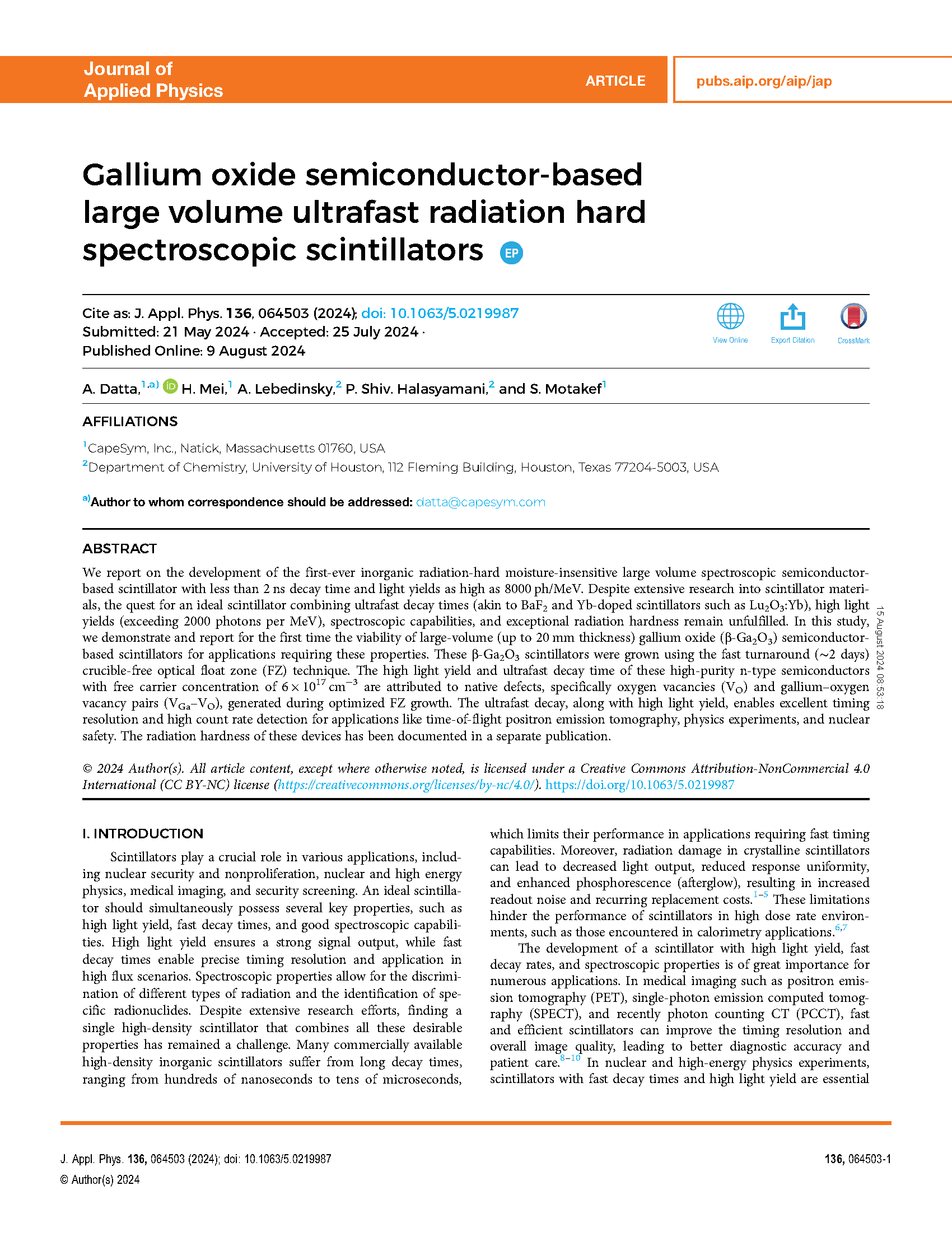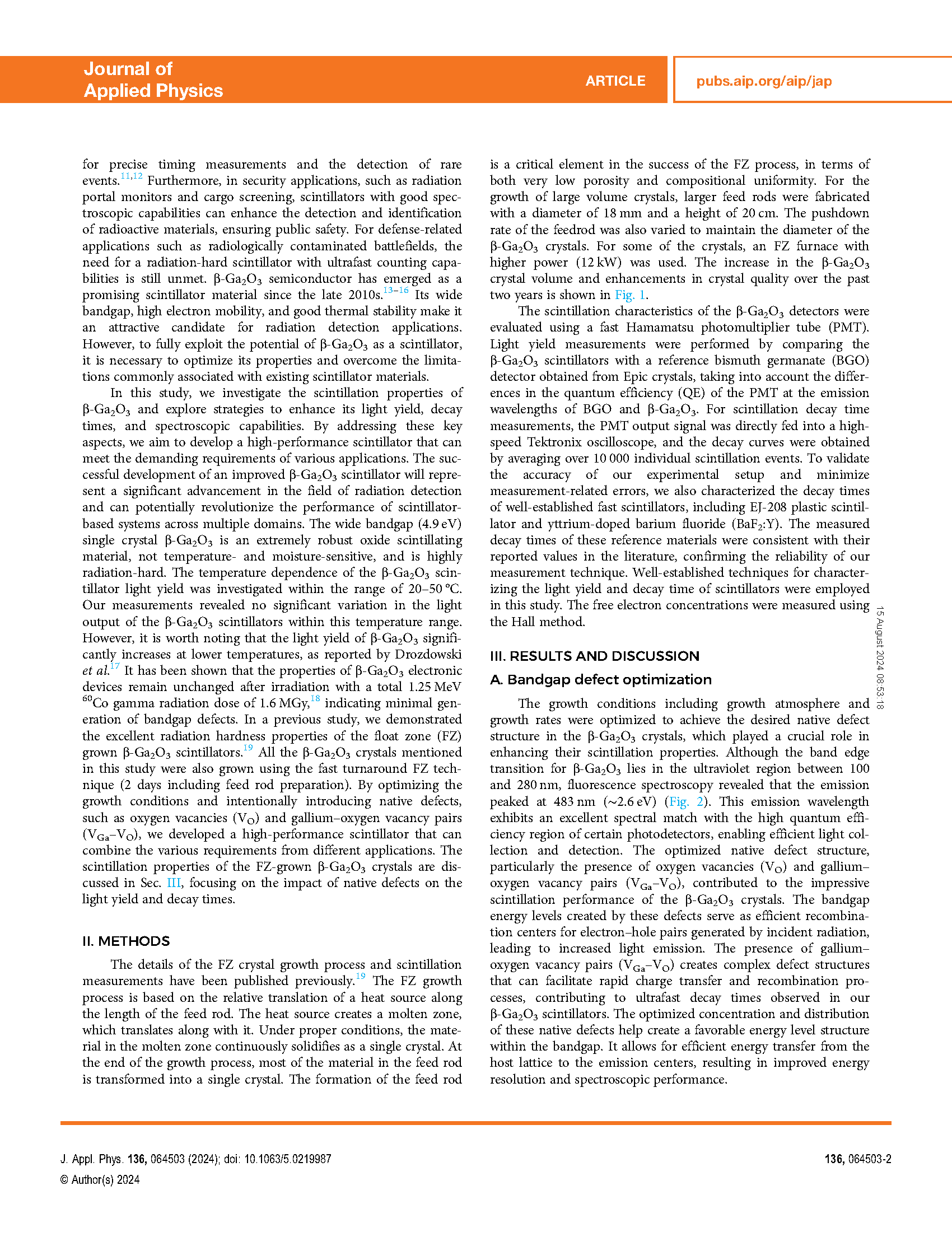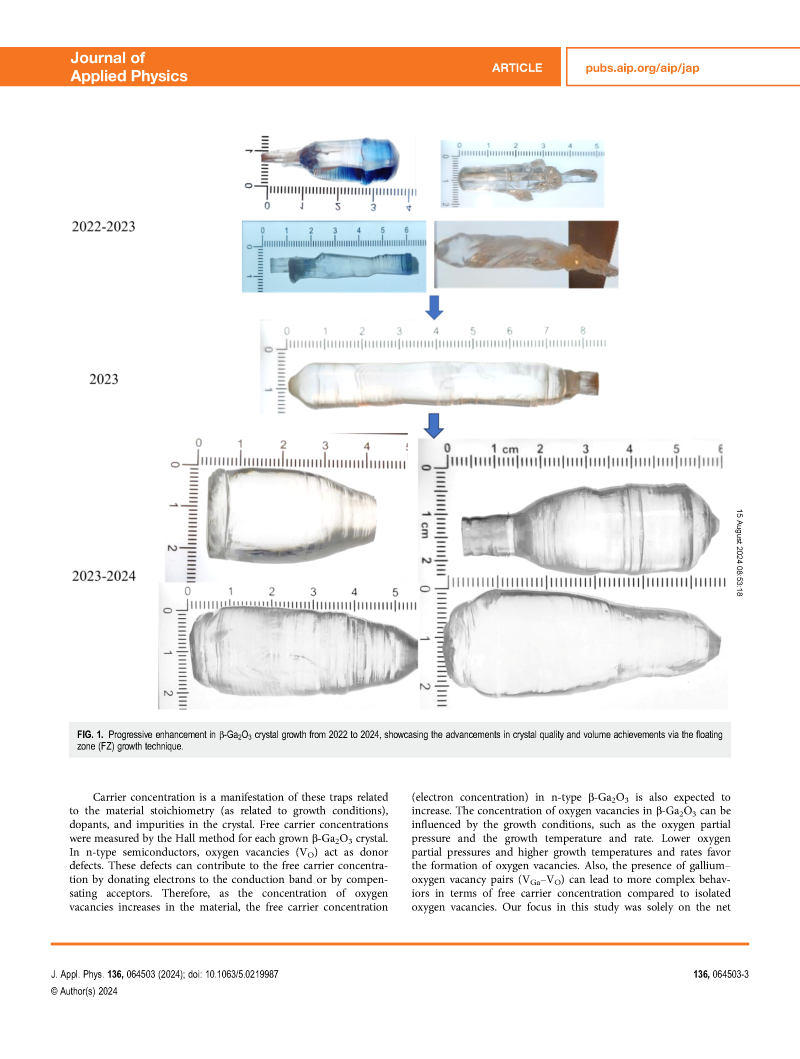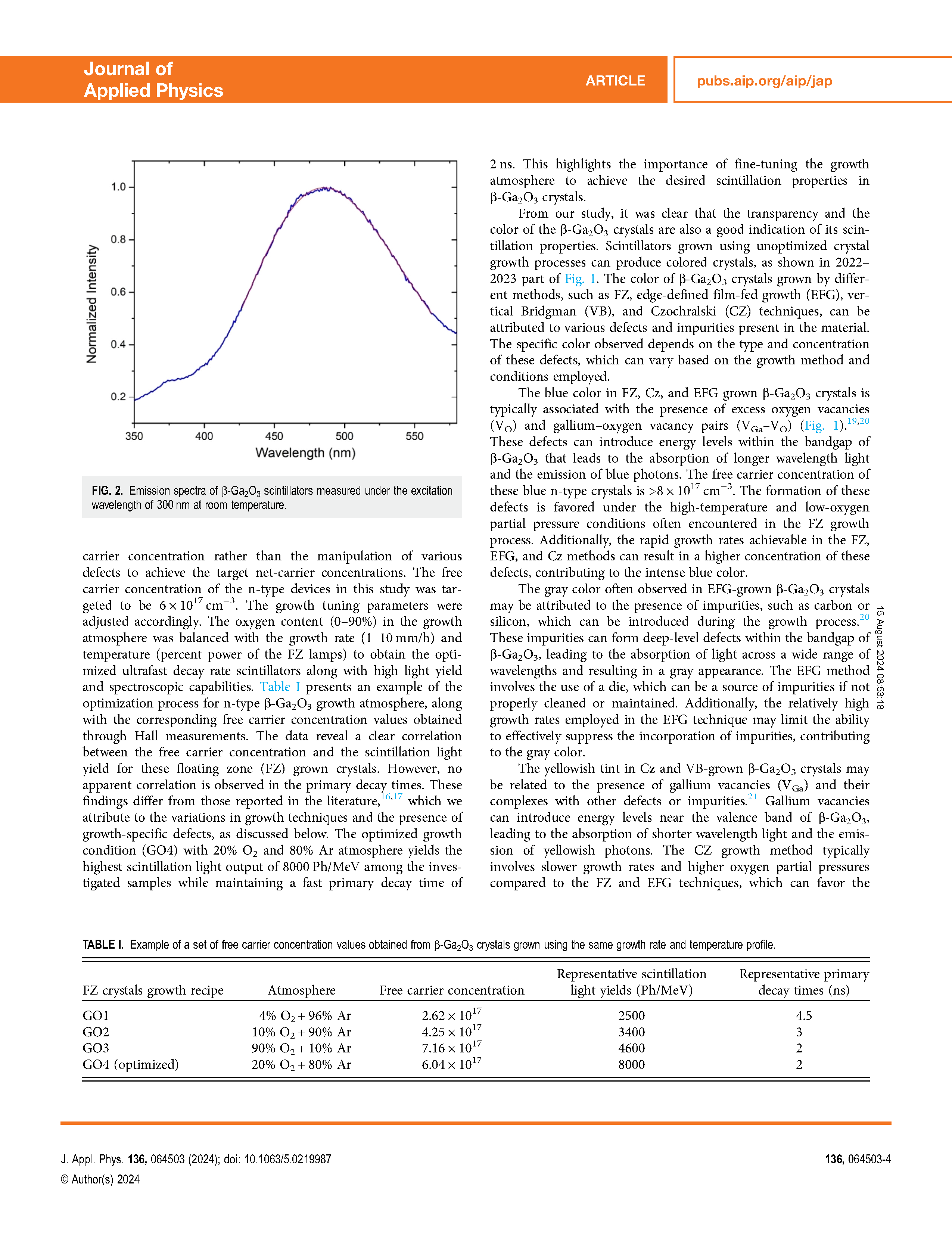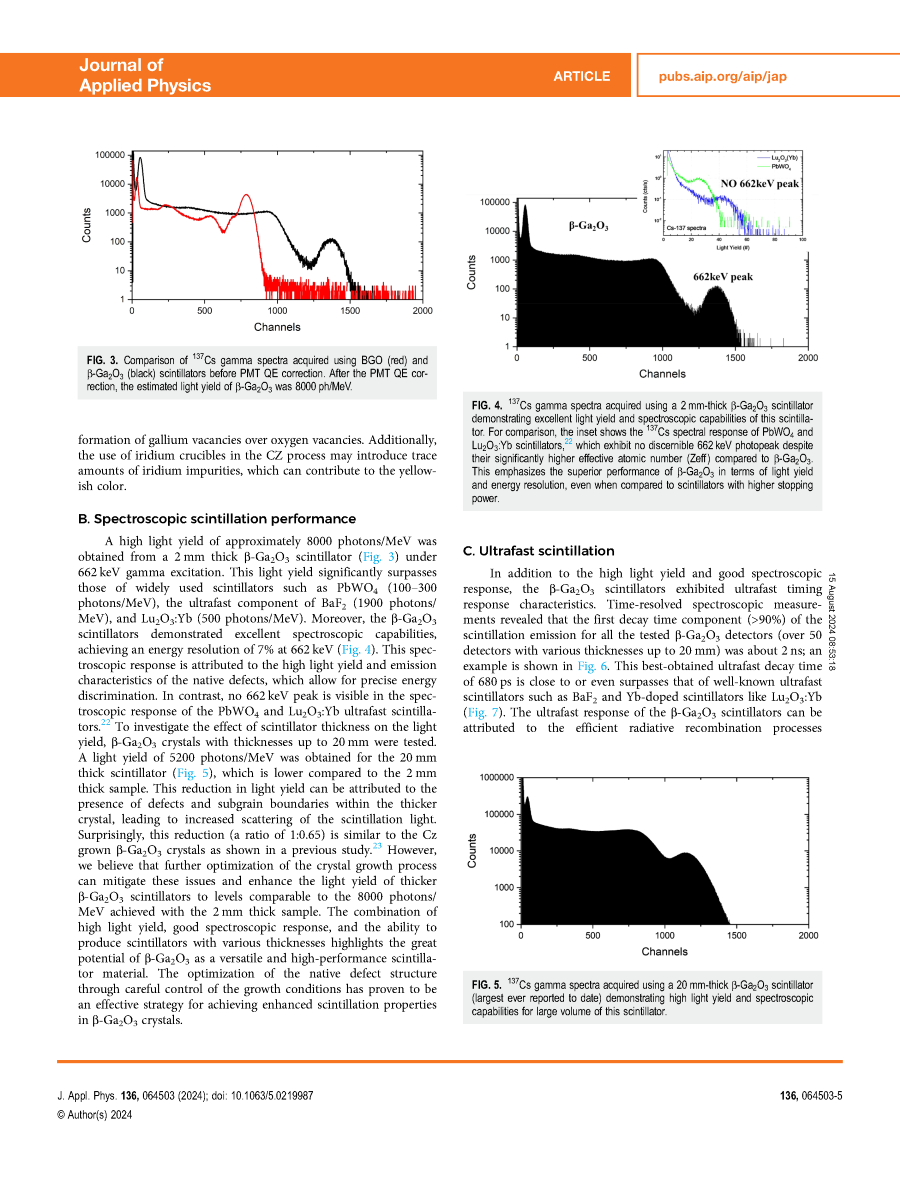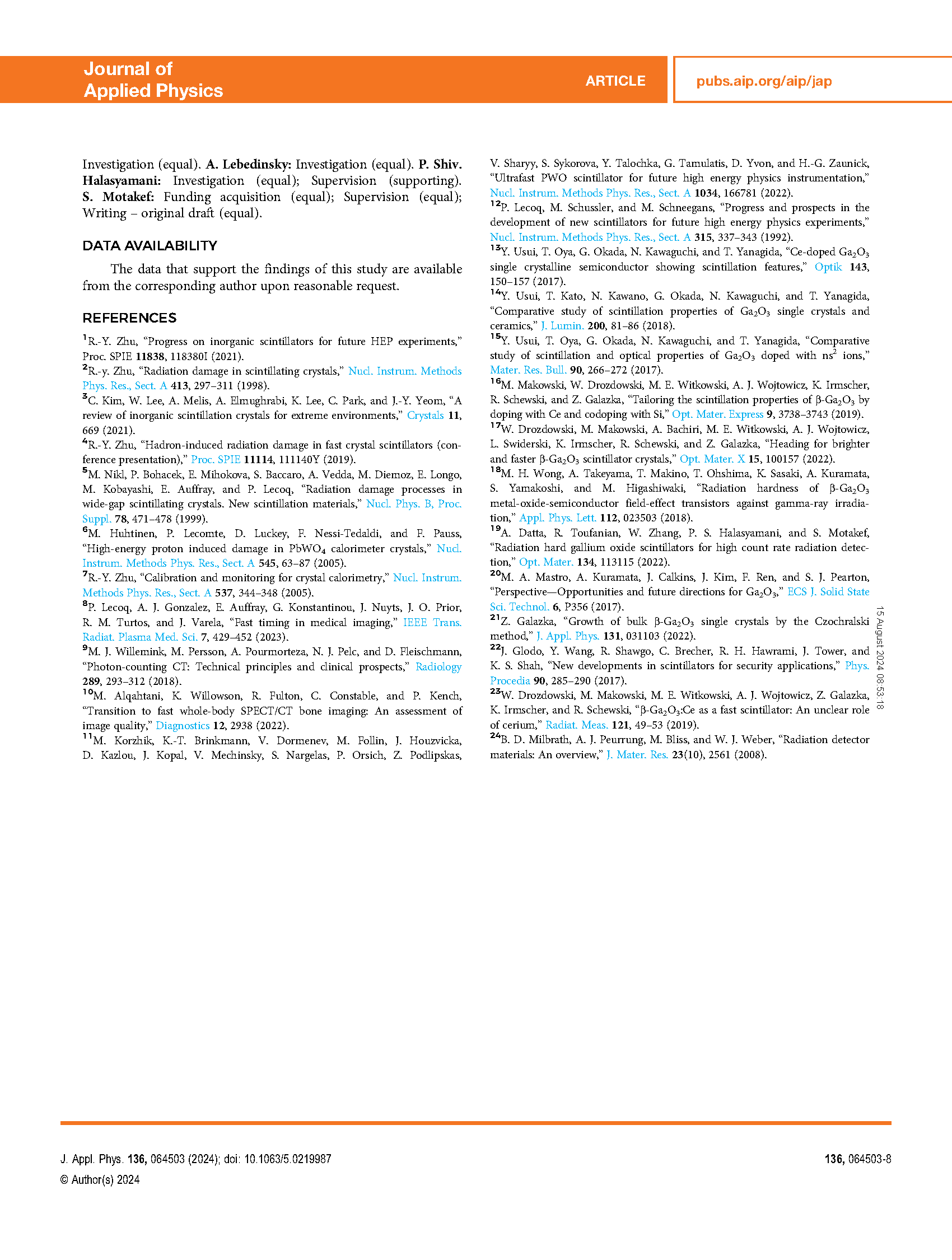
【International Papers】Gallium Oxide Semiconductor-Based Large Volume Ultrafast Radiation Hard Spectroscopic Scintillators
日期:2024-11-11阅读:567
Researchers from the CapeSym, Inc. have published a dissertation titled "Gallium oxide semiconductor-based large volume ultrafast radiation hard spectroscopic scintillators" in Journal of Applied Physics.
ABSTRACT
We report on the development of the first-ever inorganic radiation-hard moisture-insensitive large volume spectroscopic semiconductor-based scintillator with less than 2 ns decay time and light yields as high as 8000 ph/MeV. Despite extensive research into scintillator materials, the quest for an ideal scintillator combining ultrafast decay times (akin to BaF2 and Yb-doped scintillators such as Lu2O3:Yb), high light yields (exceeding 2000 photons per MeV), spectroscopic capabilities, and exceptional radiation hardness remain unfulfilled. In this study, we demonstrate and report for the first time the viability of large-volume (up to 20 mm thickness) gallium oxide (β-Ga2O3) semiconductor-based scintillators for applications requiring these properties. These β-Ga2O3 scintillators were grown using the fast turnaround (∼2 days) crucible-free optical float zone (FZ) technique. The high light yield and ultrafast decay time of these high-purity n-type semiconductors with free carrier concentration of 6 × 1017 cm−3 are attributed to native defects, specifically oxygen vacancies (VO) and gallium–oxygen vacancy pairs (VGa–VO), generated during optimized FZ growth. The ultrafast decay, along with high light yield, enables excellent timing resolution and high count rate detection for applications like time-of-flight positron emission tomography, physics experiments, and nuclear safety. The radiation hardness of these devices has been documented in a separate publication.

FIG. 1. Progressive enhancement in β-Ga2O3 crystal growth from 2022 to 2024, showcasing the advancements in crystal quality and volume achievements via the floating zone (FZ) growth technique.
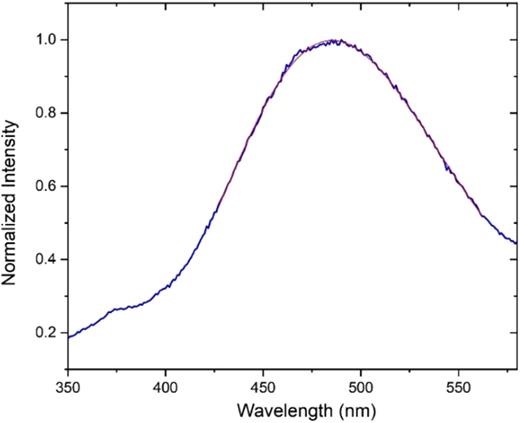
FIG. 2. Emission spectra of β-Ga2O3 scintillators measured under the excitation wavelength of 300 nm at room temperature.
DOI:
doi.org/10.1063/5.0219987
